Diamond Jewellery Buying Guide: How to buy the right diamond
Because of the worth a diamond holds, purchasing diamond jewellery can feel like a lot of pressure. But it doesn’t need to be – the process of buying yourself or a loved one diamonds should be as enjoyable as it is being gifted and wearing them. Our diamond education guide is designed to ease any concerns you may have and direct you to your ideal stone.
How do you know what diamond to buy?
Several different factors influence a diamond’s quality and value – carat, clarity, cut, and colour.
While some factors may be more influential on a diamond’s worth than others, they all contribute. We will be taking you through the four C’s to ensure you pick the perfect diamond.
Diamond Carat
Diamond carat (which can also be written as ‘ct’) is a unit of measurement and refers to how much a diamond weighs. Carat comes from the carob seed which was originally used by diamond traders to measure their weight. Below is an example of weight:
- 1 carat = 0.2 grams
- 1 carat = double the weight of 0.50 carat, but not double the size (There is only roughly 1.5mm difference)
It’s also important to note that carat and karat are two different things. While carat refers to the weight, karat refers to the purity of gold.
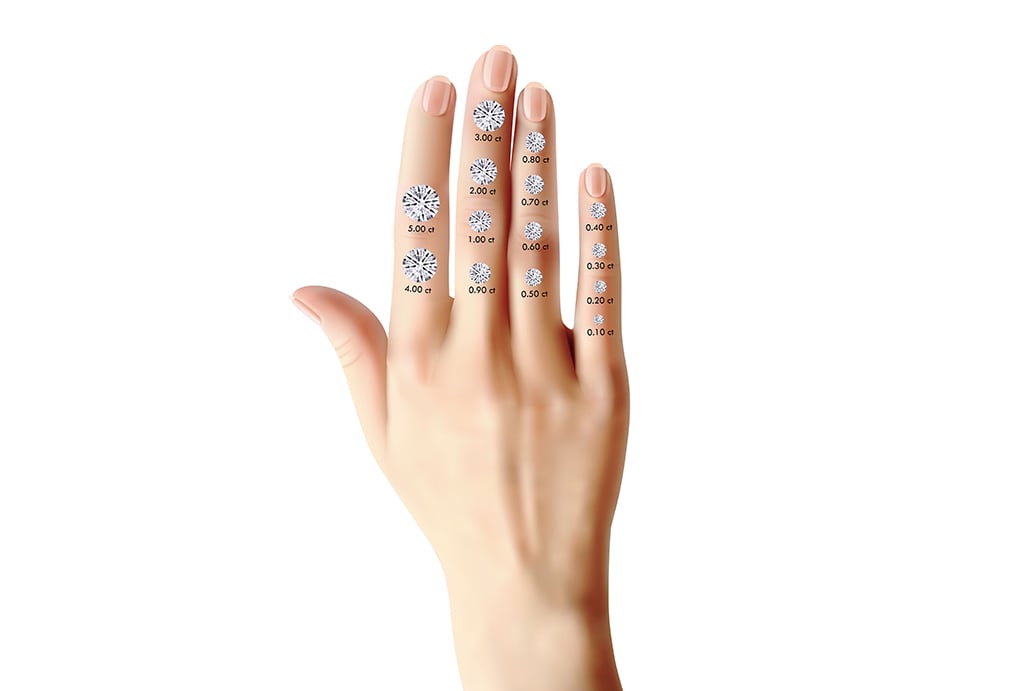
However, it is worth noting that not all diamonds that share the same carat will be of the same value. Just like snowflakes, each diamond is naturally different.
While carat is one of the most important factors in the price of a diamond, all of the 4 cs contribute to calculating the value. For example, just because one diamond may be double the size of another, this doesn’t necessarily mean that the carat is double the weight or value. A 0.57 ct diamond could be worth more than a 1 ct diamond if other factors such as cut, colour, and clarity are better.
If you have a budget for your diamond jewellery but don’t want to sacrifice its quality, carat is something you should reconsider. This will have the biggest reduction on how much your jewellery costs with the difference not being obvious to the eye.
Discover our interactive diamond size guide to visualise how different diamonds will look.
What is a good quality diamond to buy?
1 carat is a good size for an engagement ring and can capture all of the diamond’s characteristics without it being too big. In the UK, the average carat for an engagement ring is around 0.6 cts.
If you are unsure of the type of diamond, we have everything you need to know in our guide to how to pick the perfect engagement ring.
What settings make a diamond look bigger?
Different diamond shapes can make your diamond appear larger. For example, elongated shapes like a marquise cut ring can help make the diamond look bigger. Other styles like cluster and halo can also give the illusion of a bigger diamond ring.
Diamond Clarity
Each diamond is assigned a clarity grade based on its inclusions and blemishes. Inclusions are naturally occurring inside the diamond whereas blemishes are outside the diamond. The value of the diamond will be determined by how many inclusions and blemishes there are and how they affect the overall appearance.
Diamond clarity is a key measurement – the fewer inclusions and blemishes, the higher the clarity and value of the diamond. Most diamonds have inclusions, however, some don’t and are considered very rare.
Which diamond clarity is best?
The GIA Diamond Clarity Scale was created by the Gemological Institute of America (GIA) to create a standardised global measure. The GIA is one of the biggest and most established diamond grading labs in the world. The below describes the grading scale:
_1703753009.jpg)
There is no clear answer on what diamond clarity is best because this depends on your personal preference and budget.
For instance, VS2 diamonds offer great value for money because they have minor inclusions that aren’t obvious while also being affordable. Saving money on clarity may also give you the budget for a more expensive diamond shape.
Open table shapes such as emerald and asscher diamonds highlight inclusions more clearly, so you may want to avoid those diamond shapes.
Does diamond clarity affect sparkle?
Diamonds with good colour and clarity are brighter and have more sparkle. If you’re looking to upgrade your sparkle without spending more on clarity and colour, consider the jewellery style. Opting for something like a cluster or halo will give the illusion of a bigger, sparklier diamond.
You should also regularly clean your diamond engagement ring to remove any dirt and debris from affecting its radiance.
Diamond Cut
Diamond cut is often mistaken for diamond shape (such as princess diamond rings) and the two should not be used interchangeably.
Diamond cut refers to how well a diamond has been shaped and polished, allowing more light to shine through and subsequently sparkle more. This is one of the hardest factors to analyse – three things are needed to evaluate the cut of diamond and how much light interacts with it:
- Brilliance – white light reflection
- Dispersion – the refraction of the white light into colours of the rainbow
- Scintillation – the amount of sparkle when a diamond moves
There are four classifications of diamond cut, going from excellent (the best cut possible) to poor, which are not sold at Angelic Diamonds as they do not align with the high quality we offer.
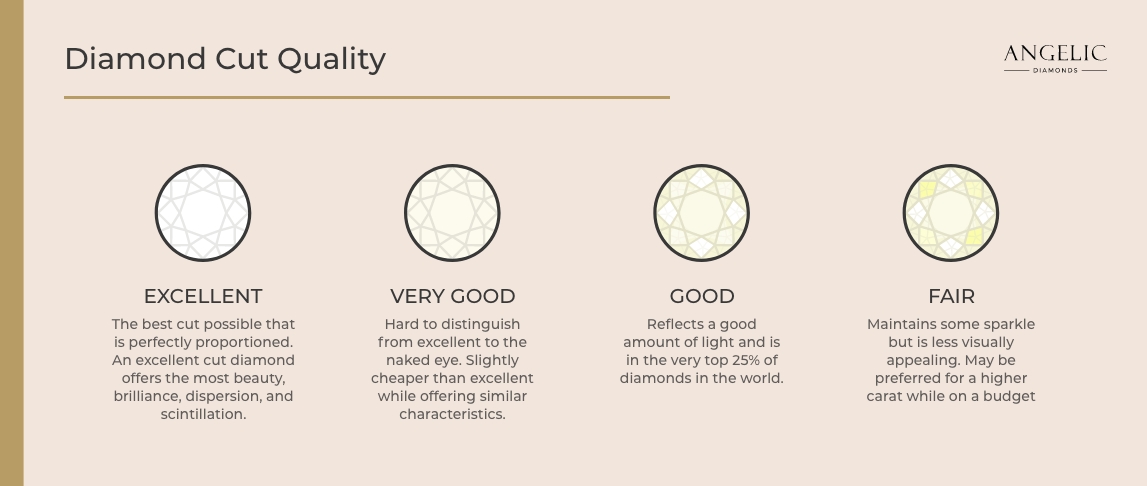
Diamond Colour
Diamond colour refers to how white the diamond is. Not all diamonds are white, some are naturally brown or yellow due to nitrogen in the diamond. The more colourless a diamond, the more valuable due to its rarity. At Angelic Diamonds, we only offer diamonds with a colour grading of D to H.
_1703753100.jpg)
What is the best colour diamond?
In terms of value, colourless diamonds are the best. However, in terms of what is best for you, this is dependent on what you want. Some customers may want to prioritise their budget or sacrifice colour for carat and choose a diamond with a slight hint of yellow.
One important thing to note is that if you’re choosing a bigger diamond over 1 carat, the yellow hint will be more obvious than a smaller one.
Book an appointment with our jewellery experts for guidance or get in touch for a bespoke ring design.
What affects diamond colour?
There are a number of chemical impurities that affect the colour of a diamond, such as nitrogen. This is all completely naturally occurring and nothing to worry about. Each diamond is different and will have formed under slightly different conditions all around the world.
Can diamonds yellow with age?
A diamond's colour is determined by chemical impurities when formed. It is impossible to alter a diamond's chemistry, so it is impossible to change over time and yellow with age. Just make sure you keep it clean from debris and dirt to shine to its full potential.
Diamond shape
Each person will have a different preference for which diamond shape they prefer. The shape refers to the outline of the diamond and, with this, you can make it as personable to you as you like.
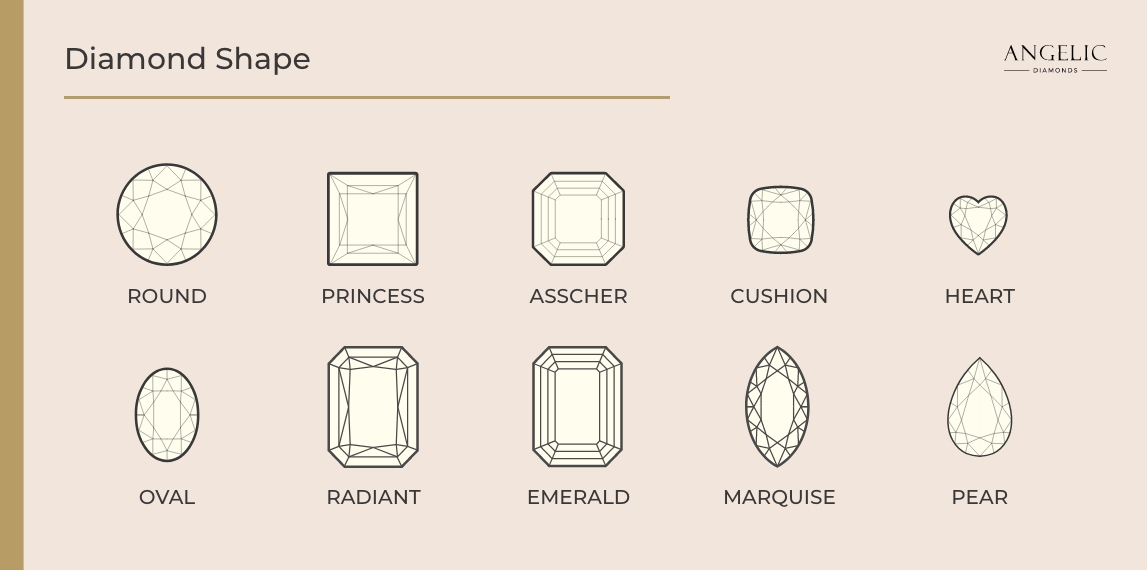
Round shapes are considered more traditional, however, diamond ring shapes such as marquise and pear are becoming more popular. The marquise and pear diamond ring shape will give the illusion of a thin, long finger whereas the radiant ring shape manages to hide inclusions well because of the number of facets.
Discover more about each specific shape with our diamond shape guide. You can also check out our celebrity engagement ring trends as well as the British royal family’s jewels to see which shapes those in the public eye are wearing.
Which diamond shape has the most sparkle?
The round shape has 58 facets, making it the best for sparkle as it reflects so much light. Round diamonds are also incredibly timeless and versatile, not to mention nearly all round diamonds are brilliant cut.
What is the hardest diamond shape to cut?
Elongated shapes such as oval, marquise, and pear diamond shapes are some of the hardest to cut because of the “bow-tie effect.” The bow-tie effect is where light is sucked into the centre of the stone, which we want to avoid. It takes skill to cut these shapes to avoid too much light being sucked in.
What shape of diamond is the least expensive?
Asscher and emerald shapes are the cheapest diamonds because there is less waste when they are created from rough stone.
Should I buy a lab-grown diamond?
Lab-grown diamonds are cheaper alternatives to natural diamonds. But you shouldn’t worry if it is possible to tell the difference between a lab-grown diamond and a natural diamond - they look identical. The only difference between the two is how they are formed. They have the same properties, look the same and also adhere to the cut, clarity, colour and carat that we have discussed.
You can also read more on lab-grown diamonds vs different gemstones.
If you are looking to purchase an engagement ring, we also have expert advice on how to discreetly measure your partner’s ring size.
You May Also Like
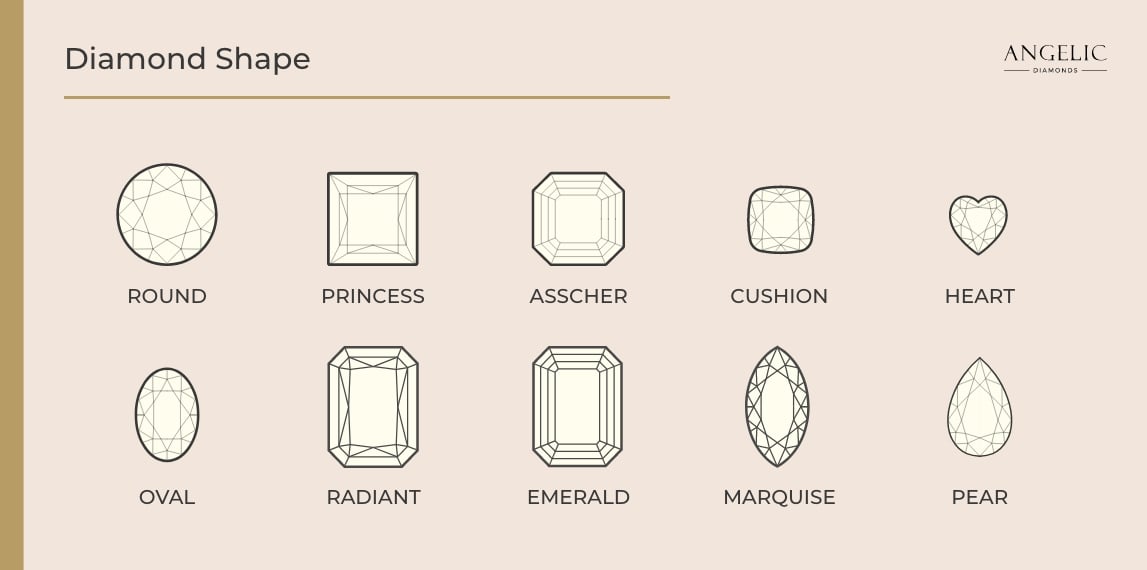
Your guide to engagement ring shapes
Diamond shape, often confused with diamond cut, refers to the stone&rs ...
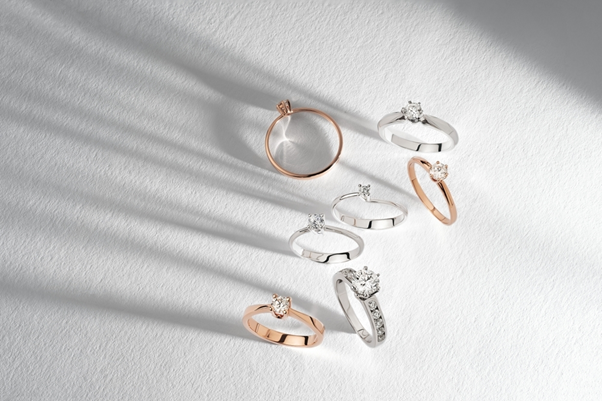
Choosing The Best Metal For Your Engagement Ring
There’s a lot to consider when shopping for an engagement ring o ...
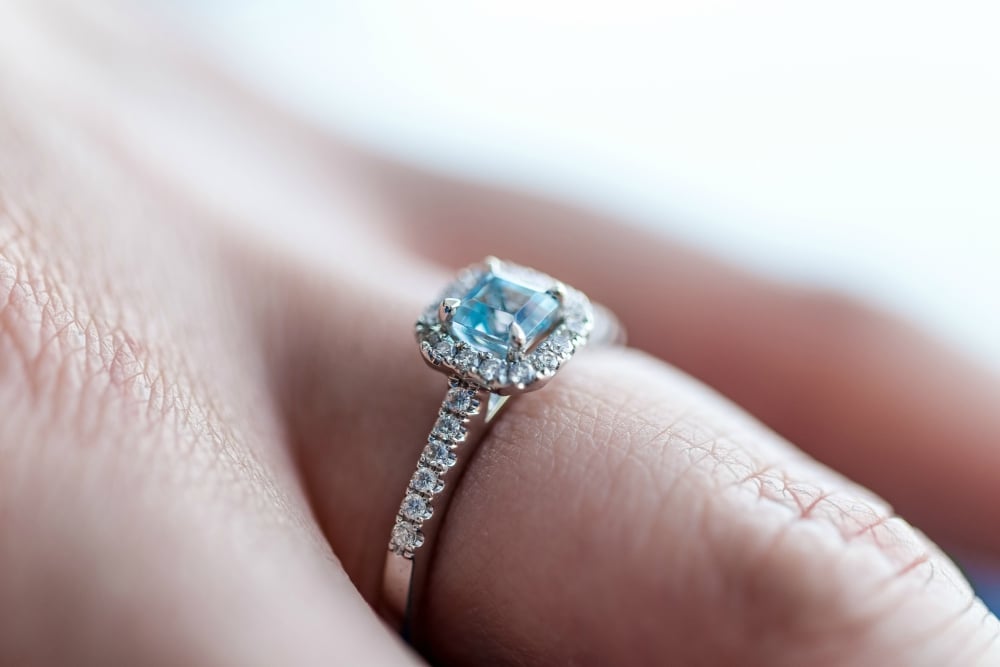
How to Choose an Engagement Ring to Suit Your Hand
Choosing an engagement ring is definitely not something you want to ge ...
